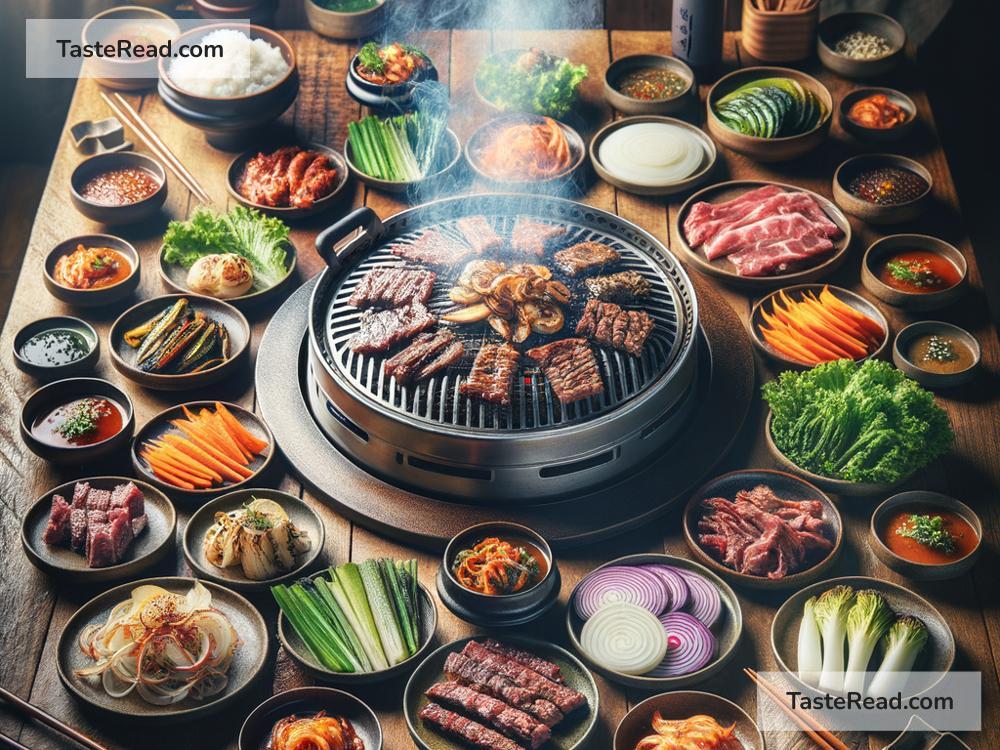The Evolution of Korean BBQ
Korean BBQ is one of the most delicious and fun dining experiences in the world. Picture sizzling meat on a grill at your table, wrapped in fresh lettuce leaves, and topped with tasty sauces and sides. This popular food has come a long way from its beginnings, bringing together old traditions and modern ideas. Let’s explore the fascinating story of Korean BBQ and how it became what it is today.
A Look Back in History
Korean BBQ, or “gogi-gui,” which means “grilled meat,” has been part of Korean culture for centuries. Its roots go back to ancient Korean cooking practices that involved roasting meat over open flames. Early Koreans cooked their food with fire because it was the simplest and most effective way to prepare meals. These cooking techniques laid the foundation for what would become Korean BBQ.
One of the earliest influences came from the nomadic tribes of the Korean Peninsula, who often grilled meat such as beef, pork, and lamb over fire pits. At that time, meat was a luxury, reserved only for special occasions and ceremonies. As Korean society evolved, farming improved, and access to meat became easier, allowing grilled dishes to spread across the country.
The Birth of Bulgogi
If we talk about Korean BBQ, we have to mention bulgogi. This is one of the most famous Korean dishes and plays an important role in the evolution of Korean BBQ. The word bulgogi means “fire meat,” and it started as marinated beef cooked over an open flame during the Goguryeo Kingdom (37 BCE–668 CE).
Back then, beef was marinated with soy sauce, garlic, and honey to enhance its flavor and tenderize the meat. This special marinade became the secret to bulgogi’s unforgettable taste and has been passed down through generations. Bulgogi spread quickly and became a favorite food for families and gatherings. Over time, people added their own twists, using pork or chicken instead of beef and making variations of the marinade.
The Grill Moves Indoors
For many years, grilling meat was done outside or in open-air markets. However, the rise of the modern restaurant industry in Korea created a big change. Around the late 20th century, Korean BBQ restaurants started offering tabletop grills, allowing people to prepare their favorite dishes in the comfort of an indoor space.
This idea was revolutionary because it gave diners control over how their meat was grilled. Instead of waiting for chefs to cook their meals, customers could grill their own meat at their table, just the way they liked it. Tabletop grills quickly became a symbol of Korean BBQ culture, making dining more interactive.
The meat options also expanded. While traditional bulgogi remained popular, dishes like samgyeopsal (grilled pork belly), galbi (grilled short ribs), and spicy marinated chicken became customer favorites. The sides, known as banchan, added variety to the meal. These small dishes, including kimchi, pickled vegetables, and soybean sprouts, helped balance the flavors and made the BBQ experience complete.
Korean BBQ Goes Global
In the late 20th century and early 2000s, Korean BBQ started to gain popularity outside of Korea. Thanks to the Korean wave, or Hallyu, which includes K-pop music, dramas, and movies, people around the world became curious about Korean food and culture. Restaurants specializing in Korean BBQ began opening in the United States, Europe, and other countries, attracting both Koreans and non-Koreans alike.
Social media played a big role in spreading Korean BBQ’s fame. Platforms like Instagram and YouTube showed mouthwatering videos of sizzling meat and delicious sides, catching the attention of food lovers everywhere. Korean BBQ became not just a meal, but a social event—a way to bring people together to share food and laughter.
A Modern Twist
Recently, Korean BBQ has adapted to modern tastes and trends. Many restaurants offer unique twists, like fusion dishes that combine Korean BBQ with other cuisines. For example, some chefs add Korean-style grilled meats to tacos, burgers, and pizza. Vegan and vegetarian options have also become popular, replacing meat with mushrooms, tofu, or plant-based proteins but keeping the same flavorful marinades.
Technology also plays a role. High-tech grills are being introduced that control cooking temperatures precisely, making it easier to cook meat perfectly. Some restaurants even use smokeless grills for a cleaner dining experience.
Conclusion
Korean BBQ has come a long way from simple fire-roasted meats to a globally famous dining experience. It combines the rich history of Korean traditions with modern innovations, creating a unique way of enjoying food. Whether you’re grilling bulgogi, samgyeopsal, or trying a modern twist like plant-based BBQ, the essence of Korean BBQ remains the same—it’s about sharing good food with good people.
So, the next time you sit down for Korean BBQ, take a moment to appreciate its incredible journey through history. From ancient fire pits to chic restaurants around the world, Korean BBQ truly is a celebration of flavor, culture, and connection.


